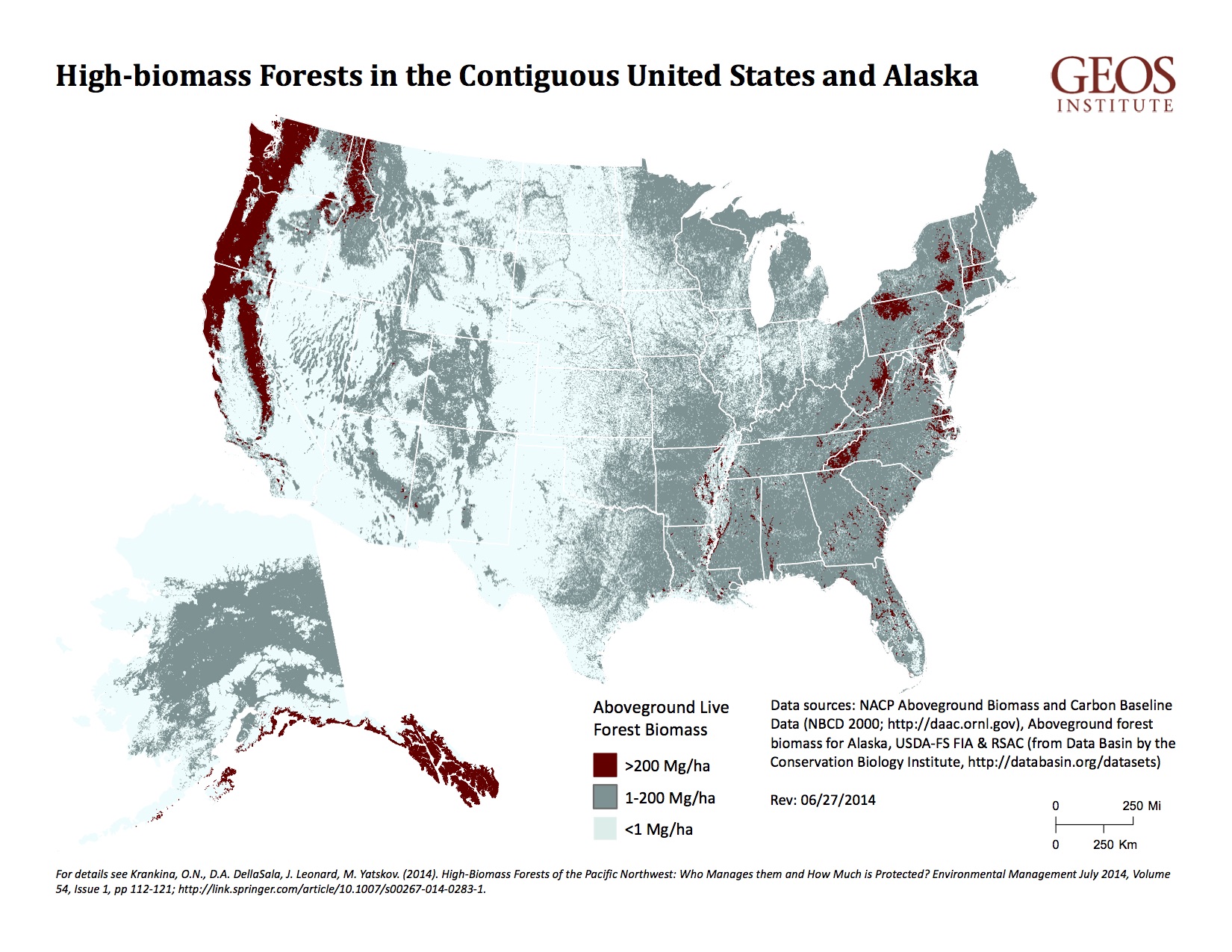
Forests store more carbon per acre than any other terrestrial ecosystem on the planet; they need to be the nation’s first line of climate change defense. What’s left of high-biomass primary (old-growth) forests in the U.S.are largely on federally-owned lands where significant but incomplete conservation agreements have secured some protections. We need to protect them completely, and this is why Sierra Club advocates for the creation of a national Forest Carbon Reserve that would identify and protect carbon-dense primary forests, as well as areas best suited for ecologically-appropriate restoration, afforestation and "proforestation."
"Proforestation" is a relatively new term and an important concept. Basically, it means extending protections so as to allow areas of previously-logged forest to mature, removing vast amounts of atmospheric carbon and recovering their ecological and carbon storage potential. Recent research suggests that proforestation is a more effective, immediate, and low-cost approach than reforestation or afforestation that could be mobilized across suitable forests of all types.
In the U.S., the Sierra Club advocates for ending commercial logging on federal public lands. This will not only safeguard remaining primary forests, but also allow proforestation across wide areas. The Northwest Forest Plan offers a precedent: its implementation in the National Forests of the Pacific Northwest has succeeded in turning the region into a carbon sink by allowing for forest recovery. This process must be allowed to continue and extended to other regions.
Establishing a Forest Carbon Reserve would facilitate a shift away from federal subsidies for logging naturally carbon-rich, older forests, or logging of ecologically important “snag forest” habitat (also a primary forest type), to federal investments in needed watershed and forest protection. Focusing on watershed and forest protection would not only help natural systems adapt to climate change, it would also form the foundation for a robust green economy, providing jobs for local communities encompassing a range of skills. Importantly, federal investment into watershed protection from the impacts of logging is one of the most direct means of safeguarding water on our national forests.
Another component of this approach would be the acquisition of private forestlands from willing sellers, putting them into protected public ownership to further increase the climate change mitigation potential of the Forest Carbon Reserve. This campaign could also work in conjunction with efforts to eliminate fossil fuel extraction from federal public lands—a “keep it in the forest, keep it in the ground” approach that would amplify climate benefits even more.
The creation of a Forest Carbon Reserve will be an essential part of any future Green New Deal. It would result in a substantial reduction in, and avoidance of, carbon emissions from forest degradation and fossil fuel production, would be integral to a broader green jobs program, and would establish a model for other nations where increased forest protection and transition away from fossil fuels is an indispensable part of any climate solution.